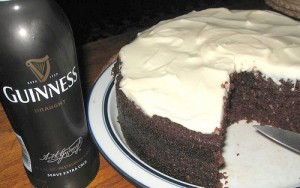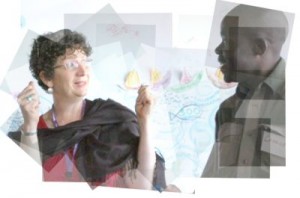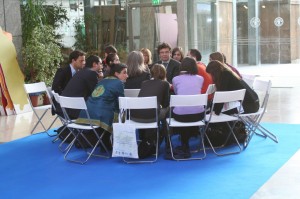 Experimentation: chocolate cakes and communicators | Full Circle Associates. Keeping on my reblogging of this St. Paddy’s day treat.
Experimentation: chocolate cakes and communicators | Full Circle Associates. Keeping on my reblogging of this St. Paddy’s day treat.
This year I used a different recipe, and then altered it for a slightly healthier version.
Chocolate Guinness Cake
Ingredients
1 3/4 cups all-purpose flour
3/4 cup natural (not Dutch-processed) cocoa powder – I upped the antioxident power to 1 cup. I love chocolate…
1 3/4 teaspoons baking powder
1/2 teaspoon baking soda
1/2 teaspoon ground cinnamon
2 sticks plus 5 tablespoons unsalted butter, softened – I used one stick of butter plus 3 tbs and 3/4 cup pumpkin puree
2 1/4 cups firmly packed light brown sugar – I used just over a cup of coconut sugar
3 large eggs
1 1/2 teaspoons vanilla extract
1 1/2 cups Guinness stout (do not include foam when measuring)
1 cup coarsely chopped pecans – I added a bit more nuts, plus 3/4 cup unsweetened shredded coconut
Confectioners’ sugar for dusting
Method
1. Position a rack in the center of the oven and preheat the oven to 325°F (160°C). Grease the bottom and sides of a 9-by-3-inch round cake pan or springform pan. Dust the pan with flour.
2. Sift together the flour, cocoa powder, baking powder, baking soda, and cinnamon into a medium bowl. Whisk to combine, and set aside.
3. In the bowl of an electric mixer, using the paddle attachment, beat the butter at medium-high speed until creamy, about 1 minute. Gradually add the brown sugar and beat at high speed until very light and creamy, about 3 minutes. Reduce the speed to medium-low and add the eggs one at a time, beating well after each addition and scraping down the sides of the bowl with a rubber spatula as necessary. Beat in the vanilla extract. Reduce the speed to low and add the dry ingredients in three additions, alternating with the stout in two additions and mixing just until blended. Add the pecans and mix just until combined. Remove bowl from the mixer stand and stir a few times with the rubber spatula to make sure the batter is evenly blended. Scrape the batter into the prepared pan and smooth the top.
4. Bake the cake for 70 to 75 minutes, until a cake tester inserted into the center comes out clean. Cool the cake in the pan on a rack for 20 minutes. I cooked mine for 70 minutes in a convection oven.
5. Invert the cake onto the rack and cool completely. With the springform pan, I just slipped the bottom out. This cake is delightful served warm.
6. Just before serving, dust the top of the cake lightly with confectioners’ sugar. Store in an airtight container at room temperature for up to a week. I did consider making the cream cheese frosting from the NYTimes version, but I resisted. Have a bit of Guinness with your cake as a beverage choice, or a nice cup of coffee!
From: http://www.leitesculinaria.com/recipes/cookbook/choc_guinness_cake.html


 Learnlets » Yes, you do have to change
Learnlets » Yes, you do have to change